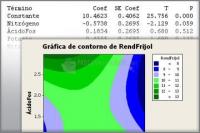

Our two groups are the native English speakers and the non-native speakers. We have students who speak English as their first language and students who do not.We also have an idea, or hypothesis, that the means of the underlying populations for the two groups are different. The second variable is the measurement of interest. When you cannot safely assume normality, you can perform a nonparametric test that doesn’t assume normality.įor the two-sample t-test, we need two variables. You might need to rely on your understanding of the data. If your sample sizes are very small, you might not be able to test for normality. What if my data isn’t nearly normally distributed?

You use a different estimate of the standard deviation. What if the variances for my two groups are not equal? Other multiple comparison methods include the Tukey-Kramer test of all pairwise differences, analysis of means (ANOM) to compare group means to the overall mean or Dunnett’s test to compare each group mean to a control mean. Analysis of variance (ANOVA) is one such method. You can use the test when your data values are independent, are randomly sampled from two normal populations and the two independent groups have equal variances. Yes, a two-sample t-test is used to analyze the results from A/B tests. See Residual plots choices.The two-sample t-test (also known as the independent samples t-test) is a method used to test whether the unknown population means of two groups are equal or not. Residual plots are found in the Graphs subdialog box. You should also plot the residuals versus the run order to check for any time trends or other nonrandom patterns. The normal and Pareto plots of the effects allow you to visually identify the important effects and compare the relative magnitude of the various effects. If the residual error is just due to lack of fit, Minitab does not print this breakdown. , if a reduced model was fit, and (3) pure error, if there are any replicates. The residual error that is shown in the ANOVA table can be made up of three parts: (1) curvature See Example of factorial plots for an experiment with three factors for a discussion of this interaction. However, because both of these main effects are involved in an interaction, you need to understand the nature of the interaction before you can consider these main effects. The p-values indicate that just one two-way interaction Time * Temp (p = 0.003), and two main effects Time (p = 0.000) and Temp (p = 0.000) are significant. This table shows the p-values associated with each individual model term. The nonsignificant block effect indicates that the results are not affected by the fact that you had to collect your data on two different days.Īfter identifying the significant effects (main and two-way interactions) in the analysis of variance table, look at the estimated effects and coefficients table. Look at the p-values to determine whether or not you have any significant effects. If the model is orthogonal and does not contain covariates, these will be the same. Minitab displays both the sequential sums of squares (Seq SS) and adjusted sums of squares (Adj SS). The analysis of variance table gives a summary of the main effects and interactions. Click OK in each dialog box.įactorial Fit: Yield versus Block, Time, Temp, CatalystĮstimated Effects and Coefficients for Yield (coded units)Ĭatalyst 0.1618 0.0809 0.09546 0.85 0.425 Under Effects Plots, check Normal and Pareto.

(The design and response data have been saved for you.)Ģ Choose Stat > DOE > Factorial > Analyze Factorial Design.Ĥ Click Graphs.
Minitab 15.0 full#
Therefore, you create a full factorial design, with two replicates, and two blocks.ġ Open the worksheet YIELD.MTW. You have enough resources for 16 runs, but you can only perform 8 in a day. You believe that three processing conditions (factors) – reaction time, reaction temperature, and type of catalyst – affect the yield. You are an engineer investigating how processing conditions affect the yield of a chemical reaction. Example of analyzing a full factorial design with replicates and blocksmain topic interpreting results session command


 0 kommentar(er)
0 kommentar(er)
